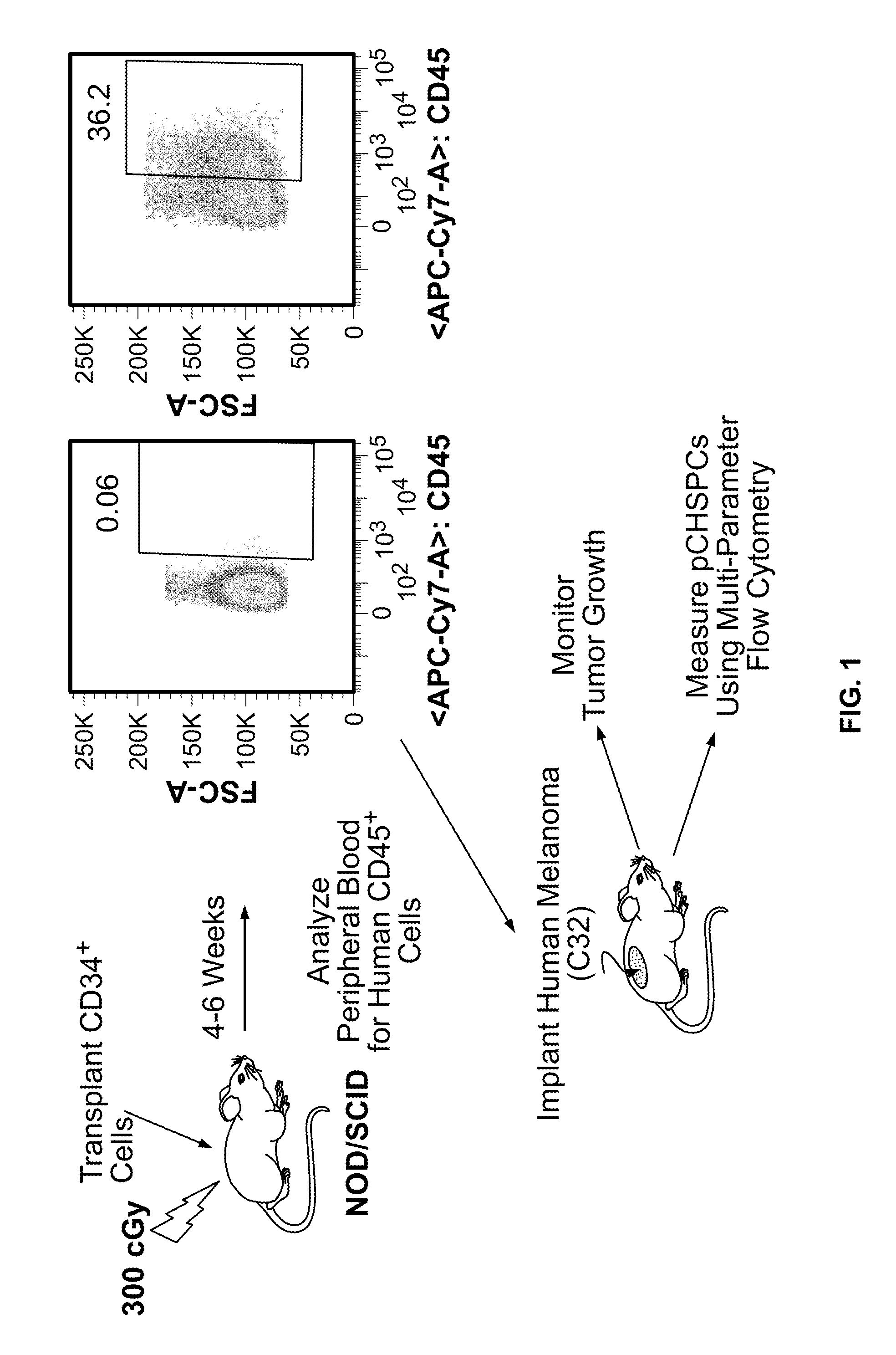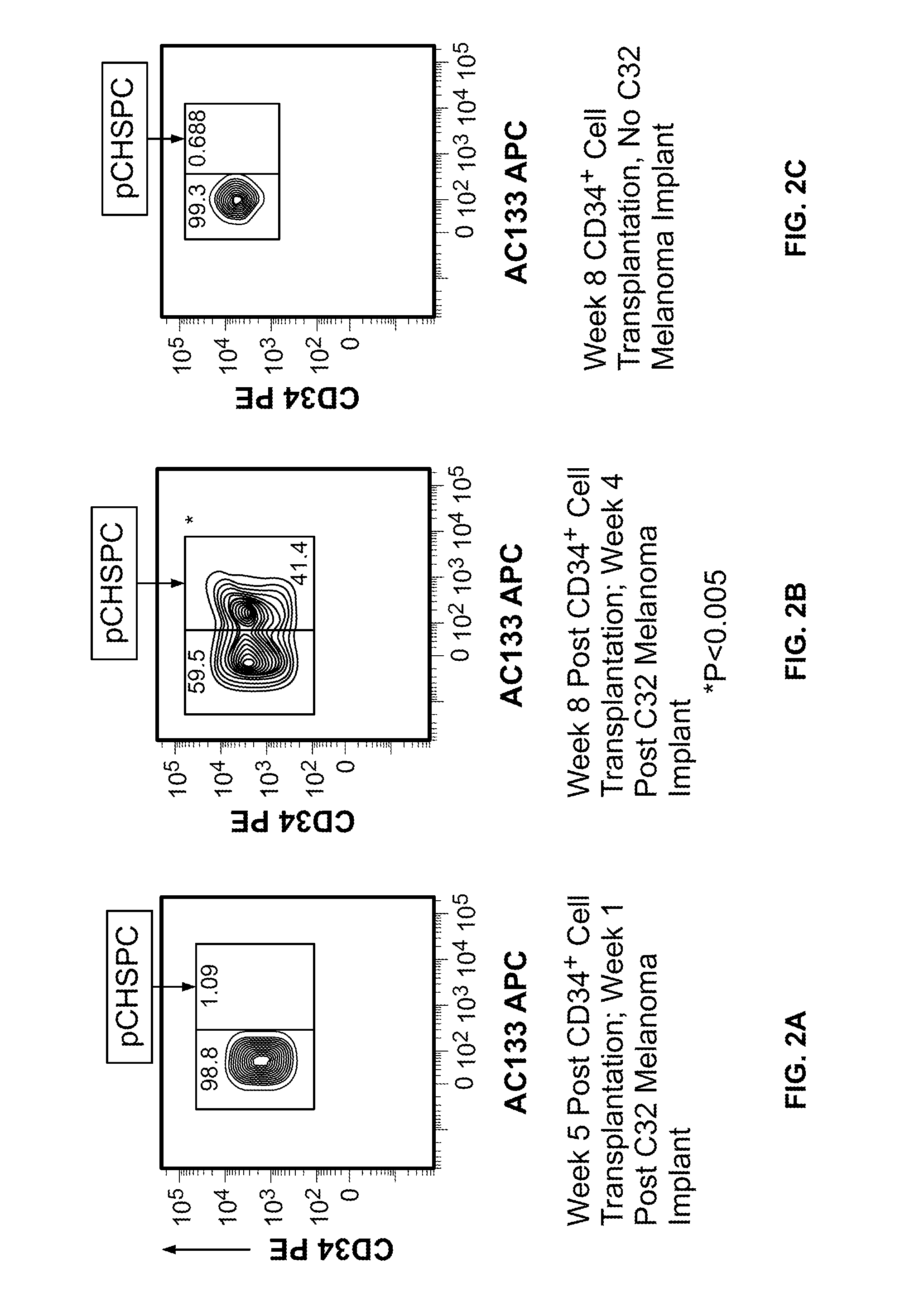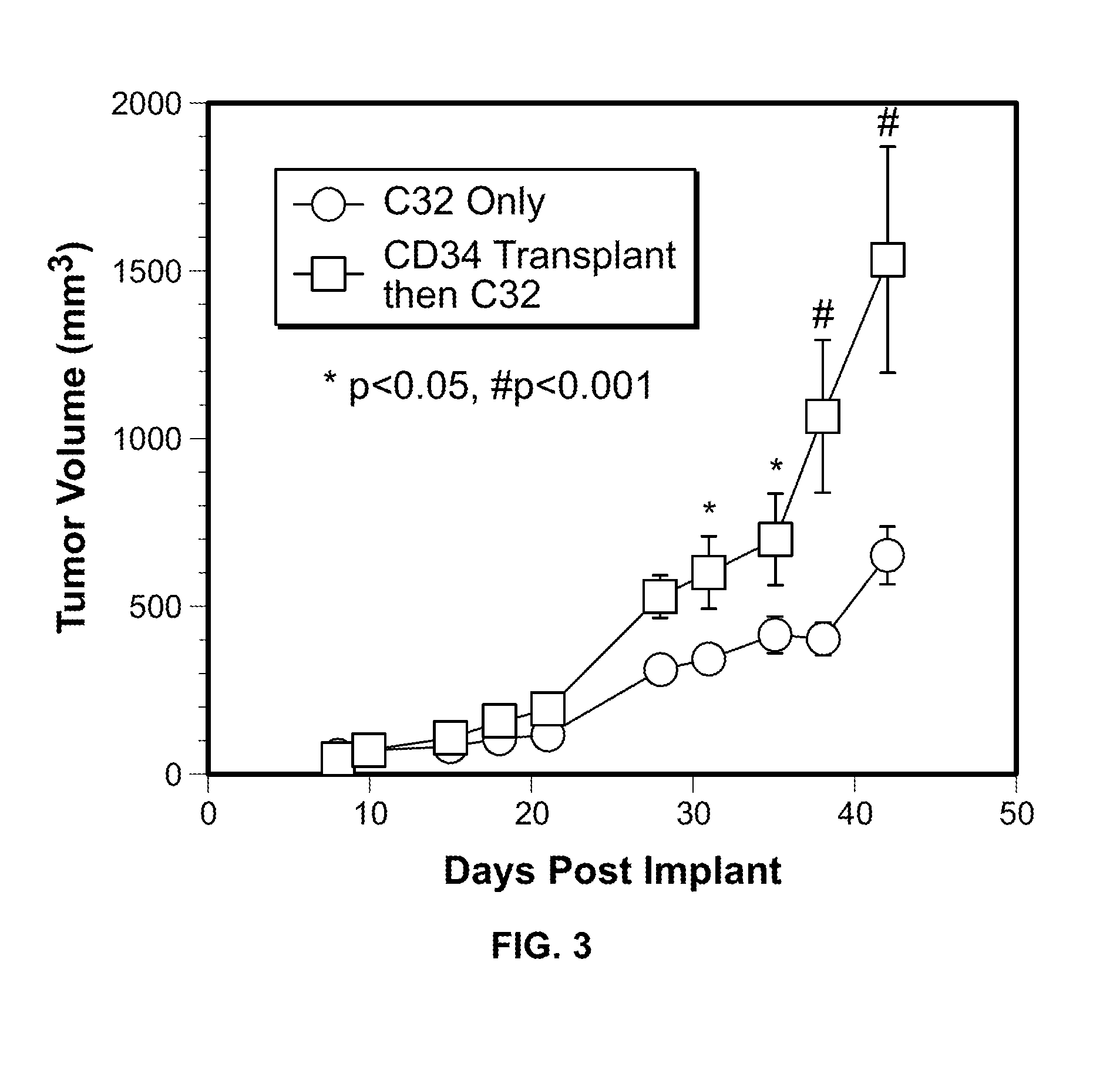Pro-angiogenic and Anti-angiogenic hematopoietic progenitor cell populations
a hematopoietic progenitor cell and anti-angiogenic technology, applied in the field of biomarkers, can solve the problems of difficult to study the specific function of tumorigenesis, and no established peripheral blood (pb) biomarkers for identifying active angiogenesis
- Summary
- Abstract
- Description
- Claims
- Application Information
AI Technical Summary
Benefits of technology
Problems solved by technology
Method used
Image
Examples
example 1
[0054]In this Example, two murine orthotopic cancer models utilizing the human cellular biomarker were used to analyze the progression of tumor growth.
Materials and Methods
[0055]Isolation of Umbilical Cord Blood CD34+ Cells. Samples of human umbilical cord blood (UCB) were collected from normal, full term infants delivered by cesarean section and the CD34+ cells were selected using the human CD34 indirect MicroBead kit and Magnetic Cell Sorting (MACS) system (Miltenyi Biotec, Auburn, Calif.) as directed by the manufacturer. The CD34+ fraction was subsequently isolated, with the viability of the CD34+ cells always greater than 95%. The purity and functionality of the MACS isolated CD34+ cells was confirmed by flow cytometry analysis (>95%) and a colony forming unit-granulocyte, erythrocyte, monocyte, megakaryocyte (CFU-GEMM) assay.
[0056]Colony Forming Unit Assay.
[0057]CFU assays (MethoCult GF H4434, Stem Cell Technologies, Inc., Vancouver, Canada) were conducted using the MACS isolat...
example 2
[0083]In this Example, patients having sickle cell disease with vaso-occlusive crisis were evaluated for pCHSPC:aCHSPC ratios.
[0084]Twenty-four pediatric patients (age<18 years of age) who were inpatient with sickle cell disease with a vaso-occlusive event were used in this Example. Six-eight milliliters of peripheral blood were collected from each patient and analyzed for pCHSPC:aCHSPC ratios as described in Example 1.
[0085]The pCHSPC:aCHSPC ratio for patients with sickle cell disease with vaso-occlusive events ranged from 0.24 to 1.0 (average of all patients was 0.73). Interestingly, some patients exhibited some recovery occurring with prolonged events which lead to the ratio increasing into the healthy range or even the active angiogenesis range (average was 2.05; range was 1.24-3.83). Recovery of the pCHSPC:aCHSPC ratio into the healthy range or active angiogenesis range could be an indication of the active remodeling occurring because of the occlusion.
[0086]These results demons...
PUM
 Login to View More
Login to View More Abstract
Description
Claims
Application Information
 Login to View More
Login to View More - R&D
- Intellectual Property
- Life Sciences
- Materials
- Tech Scout
- Unparalleled Data Quality
- Higher Quality Content
- 60% Fewer Hallucinations
Browse by: Latest US Patents, China's latest patents, Technical Efficacy Thesaurus, Application Domain, Technology Topic, Popular Technical Reports.
© 2025 PatSnap. All rights reserved.Legal|Privacy policy|Modern Slavery Act Transparency Statement|Sitemap|About US| Contact US: help@patsnap.com



